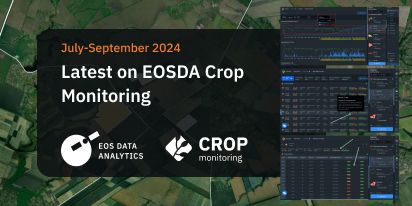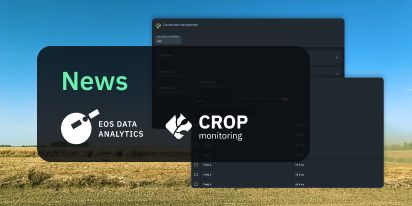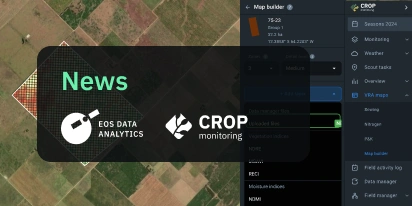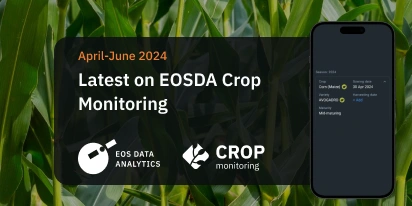How To Grow Barley And Get Increased Yields
Barley (Hordeum vulgare) is an inexpensive and easy-to-grow cereal crop that was cultivated nearly 10,000 years ago. Barley is usually grown to be used as animal fodder, and its grain is actively used in making different health foods, brewing, and even coffee. Farming barley as an overwintering cover crop and a nutrient recycler is a great way to ensure soil erosion control, weed and pest suppression, or to establish a forage or legume stand. Planting a barley field is all around a great way to revive overworked soil and improve its tilth in times of drought.
Barley has many varieties in different classifications. And each of those classifications include dozens of barley types. The most common way to classify barley is by rows: two, four, or six rows of grains on the head. Another classification is wild and domesticated barley, where two-rowed barley is considered wild, and six-rowed barley is cultivated. Barley can also be classified by seed covering (hulled or hulless) seed color (colorless, white, yellow, blue), height (dwarf), and feed or malt type.
Wild and domesticated
Domesticated barley (Hordeum vulgare) came from wild barley (Hordeum spontaneum), which contains distinctive alleles and genes, allowing it to adapt to climate change and resist biotic or abiotic stresses in cultivated barley. As domesticated barley is not brittle, it is much easier to harvest at maturity, which also means higher yields. Wild barley is brittle, and its spikelets separate at maturity, which facilitates seed dispersal.
Two-row and six-row barley
Two-rowed barley has lower protein content compared to six-rowed barley. High protein barley is mostly used for animal feed, and both two and six-row barley types are used for malting: 6-rowed barley is perfect for beer, and 2-rowed is used for pure malts. Two-row barley is traditionally used for making English beers, while six-row barley is common for American beers.
Hulled or hulless
Most barley types have a hull that tightly surrounds the kernel and must be removed before eating. Hulled barley undergoes the process of removing this indigestible, tightly-attached hull.
Hulless barley has a hull that is much easier to remove with minimum bran loss, getting the so-called pearl barley that retains the status of whole grain cereals with all useful substances.
Feed or malt type
By the purpose of use, barley is mostly grown as an animal feeder or for brewing. Barley is superior to other cereals in terms of lysine and protein content, as well as amino acid composition, all of which make it a great forage crop for monogastric animals.
Although high protein content in barley has an advantage for animal feeding, it’s a disadvantage for malt and beer production. That is why the main indicator of the malting barley’ quality is low protein content.
Barley is one of the most highly adaptable crops that grows in climates ranging from sub-Arctic to subtropical. The reasons for growing barley can be both cultural and economic, mostly due to its use in malt production. In 2018-2019, the top 10 barley producing countries were European Union (United Kingdom, Germany, Denmark), Russia, Canada, Ukraine, Turkey, Australia, Argentina, Kazakhstan, the United States, and Iran. In all of these countries, crop tracking is available for use to increase barley yields via EOSDA Crop Monitoring.
In big countries, barley growing and production also varies depending on its classifications: six-row or two-row, and hulled or hulless. Let’s take the United States as an example of one of the world’s largest barley producers with 169.5 million bushels produced in 2019. Six-row barley is grown primarily in Minnesota, North Dakota, and Idaho, while two-row barley is grown in Utah, Montana, Wyoming, Colorado, Washington, California, and Oregon. Overall, if we look at barley production by state from 2015 to 2019, the top three barley-producing states are Idaho, Montana, and North Dakota. However, this list is heavily influenced by weather, disease, and competition for land.
Here is what you need to consider to grow a healthy barley field.
Type of soil needed to grow barley
Soil cultivation (including pre-sowing) should be carried out by taking into account barley’s soil requirements and climatic conditions, predecessors, and the degree of weediness of the field. On fields that are infested with perennial weeds, deep plowing should be used. Barley responds well to the aftereffect of deep processing. You should not replace autumn plowing with moldboard tillage on fields with perennial weeds, as well as on fields with grain predecessors.
The best precursors for barley are row crops (potatoes, corn, beets, root crops) and leguminous crops (peas, vetch, annual cereal-legume mixtures).
When cultivating barley, you must remember:
- The starting amount of compound fertilizers of 50-100 kg/ha is required
- Early application of nitrogen fertilizers results in an increased yield, and late application increases protein content
- When applying increased amounts of nitrogen fertilizers, it is necessary to consider the resistance of the particular barley type to lodging
Climate needed to grow barley
Barley can be grown as both a summer or a winter crop. It tolerates air drought relatively well, but is sensitive to frost. Barley seeds can germinate at 1 – 3 ° C. The optimum temperature for germination is 20-22 ºС. Seedlings can withstand frosts up to -8 ºС, but during flowering and ripening, plants are very sensitive even to slight frosts from -1.5 to -3 ºС.
To monitor the weather and crop health remotely, use EOSDA Crop Monitoring.
Here are the main stages of the barley life cycle.
1. Leaf development
This is the first of barley’s growth stages. During this stage, the first leaf of the plant emerges, penetrating the surface by the coleoptile.
2. Tillering
At this stage, the plant branches out tillers (a type of stem) from the original seedling. The number of tillers depends on the amount of water and nutrients the plant has received and the closeness of seeds sown together.
3. Stem elongation
This stage of barley’s life cycle marks the process when the internodes lengthen in both the main stem and tillers. Eventually, the nodes appear above the soil surface.
4. Flowering, anthesis
The flowering stage is not readily visible in barley. It starts a couple of days after the inflorescence with anthers emerges. Keep in mind that most barley types flower prior to head emergence.
5. Ripening
This stage occurs 2-3 weeks after grain filling and marks barley grain ripening. During the ripening stage, water content decreases while dry matter content increases. The fully ripened stage is when the grain is hard and difficult to divide by thumbnail.
6. Senescence
The last stage of the barley life cycle marks grains loosening, plant death, and collapse resulting in a harvested product.
For Ukraine, Russia, Canada, and the USA, all spring barley growth stages can be identified and managed remotely in EOSDA Crop Monitoring.
Although barley is highly adaptable to many conditions during cultivation, its requirements to soil fertility are very high. Barley prefers fertile structural soils with a deep arable horizon and positively responds to the application of fertilizers, which usually leads to great increases in grain yields.
When preparing the land for farming, consider that the crop does not tolerate acidic soils, and the most optimal soil pH level for growing barley is 6.8 – 7.5. It is also not recommended to grow barley on soils with excessive moisture or on light sandy soils.
You can monitor soil moisture in EOSDA Crop Monitoring based on satellite images and automatically measured NDVI.
Barley has a rather weak root system, which means a loose root layer of soil increases its productivity. After fall plowing, plants form a more developed root mass that penetrates deeper than after surface cultivation. That is why land preparation for barley should include deep soil loosening. The general requirement for preparing the soil for barley is an even surface with a dense seedbed, which is necessary for the right seedlings emergence and sowing uniformity.
In terms of crop rotation, the system of the main tillage for barley is determined by the soil, climatic conditions, and the use of fertilizers and herbicides. After potatoes, beets and other row crops, if the soil is not very compacted, fall plowing would be enough to prepare the land for farming barley.
The prefered planting period for barley is April – June, depending on the region’s frosts and seasonal effects. The crop has a slightly lower frost tolerance (1°C) compared to wheat, which allows planting it earlier in the season to produce higher yields, larger grain size, and low protein content for further malting. But keep in mind that early barley planting may increase the frost risk, and planting too early may lead to crops running quickly to head if warm weather occurs. Since barley can be grown at a wide variety of locations with very different planting dates, you can use EOSDA Crop Monitoring to see when your field is ready for barley planting in terms of temperature and soil moisture level.
Barley is also a demanding crop in terms of soil condition. For high yields, its seeds require soils with sufficient water, nutrients, and lime content. Before preparing barley seeds for planting, ensure a clean, weed-free seedbed. Mind that when planted as a cover crop, barley’s fibrous roots absorb residual nutrients from the soil, which means fertilization may not be needed. But if the soil tests show the need for nitrogen, apply the required amounts when planting. If you plant barley in an arid climate, consider at least one irrigation event.
When planting barley, it is important to distribute the seeds evenly at the optimal depth, which depends on many factors (weather conditions during sowing, soil conditions). The most common method of sowing barley is the usual row with a spacing of 15 – 20 cm and with a critical distance of 1.4 cm between plants. At a shorter distance, the potential of both individual plants and crops as a whole will not be fulfilled.
To get better yields, mark field productivity zones in EOSDA Crop Monitoring, and apply differential seeding to distribute barley seeds rationally across the field.
Barley seed rate
There is no fixed or universal barley seed rate, but the most common is around 60-90 and 70-110 kg/ha. In each case it should be determined depending on the type of barley, soil type, moisture, cultivation, and sowing dates.
Preparing barley seeds for planting
Barley seeds may hold various infectious diseases (smut, root rot, leaf spots). That is why, 1 – 2 weeks before sowing, barley seeds should be treated with a seed pickle that controls smuts and bunts. The choice of a pickle should be determined by the phytopathological state of the seeds, the fungicidal activity of the pickle, and the purpose for which barley is grown.
Barley has a great response to fertilizers. To create 1 ton of grain, barley absorbs approximately 26 kg of nitrogen, 11 kg of phosphorus, and 24 kg of potassium from soil. During a short growing season (80 – 90 days) its mineral nutrition lasts for about 40 days. To achieve high productivity of a barley field, it is critical to provide it with all of the important nutrients when needed.
Nitrogen
Nitrogen fertilization is one of the main ways to increase barley yields. Barley nitrogen consumption will amount to about 1.2 kg of nitrogen / ha / day, reaching its peak at 3 kg nitrogen / ha / day when growing, and decreasing to about 1.8 kg nitrogen / ha / day after full development.
Phosphate
After 2-3 leaves appear in the plant, it will start consuming phosphate from the soil. First, during early rooting, and then at the beginning of the spring growth stage. Between March and May 70% of the phosphate is consumed, and a phosphate fertilizer should be applied to meet this need.
Sulfur
Sulfur moves poorly in the plant, which negatively affects new seedlings. To avoid this issue, it is necessary to ensure constant availability of sulfur through multiple applications to meet the plant’s demand. Sulfur deficiency can also be solved with the help of foliar nutrition.
It’s crucial to apply fertilizers only where needed to avoid overapplication.
Use EOSDA Crop Monitoring to easily manage differential fertilizer application to distribute fertilizers across the field rationally.
Barley responds well to irrigation. In medium dry years, it is watered 2-3 times, and in dry years it is watered 3 to 4 times with an average rate of 450 – 550 m3 / ha. To reduce lodging, the last crop watering is carried out no later than the heading phase.
There is no fixed amount of water required for the barley watering process. It is determined by the soil’s moisture, temperature, and humidity during the growing period, which allows for estimating the amount of water needed based on evaporation from the soil and transpiration from the plant. The amount of water required may vary from 320 – 420 mm to 360 – 470 mm in warmer years to achieve maximum productivity.
The frequency of barley watering also depends on the method of irrigation and the irrigation system capacity (mm/day), as it shows how much water the irrigation system can apply in one day. The greater the system capacity, the faster the soil water deficit can be satisfied.
Overall, the best way to arrange correct barley watering times is to rely on data about temperature and soil moisture level.
Such data is available in EOSDA Crop Monitoring, where you can manage your barley field irrigation remotely, based on already measured parameters.
Here are the most common pests affecting barley and the ways to protect the crop from them:
Barley thrips
Thrips suck juice from the plant. The damaged upper parts of the ear look whitish and frayed, and subsequently dry out, causing grain fragility.
Protection measures:
- Crop rotation
- Deep fall plowing
- Destruction of the carrion
- Insecticide treatment
Cereal leaf beetle
Beetles and larvae feed by gnawing stripes along leaf veins.
Protection measures:
- Post-harvest stubble plowing
- Bait seeding (oats, spring cereals, or a mixture of these crops for forage purposes)
- Insecticide treatment
Grasshoppers
Grasshoppers usually damage barley crops in dry years.
Protection measures:
- Insecticide treatment against grasshoppers (malathion, carbaryl, permethrin, or bifenthrin)
Wheat stem sawfly
Damages winter cereals. The harm is expressed in productivity decrease and lodging.
Protection measures:
- Optimal terms for sowing
- Increased seed rate
- Crop rotation
- Insecticide treatment
Wireworms
These pests eat anything from root crops to the roots of any cultivated plants or weeds, especially wheatgrass.
Protection measures:
- Seeding after crops less affected by the pest (vetch, peas, flax, beans)
- Weed control
- Insecticide treatment
- Deep plowing
- Soil liming
Use EOSDA Crop Monitoring to keep an eye on your crops’ health to treat them accordingly when needed to prevent lower yields.
Here are the most common barley diseases and the ways to protect the crop from them:
Common root rot
Affects the roots, tillering nodes, and the base of the stems. Infected plant parts turn brown until fully destroyed, sometimes with the formation of dry rot.
Protection measures:
- Selection of relatively resistant barley varieties
- Crop rotation
- Application of organic and phosphorus-potassium fertilizers
- Stubble plowing and early fall plowing
- Seed treatment
Ergot
A sticky liquid (honeydew) appears on parts of an ear or panicle. The sugary substance has a distinctive smell of rotting meat and attracts flies and other insects to the infected ears.
Protection measures:
- Selection of varieties characterized by a short flowering period
- Early sowing on short notice
- Weed control
- Timely harvesting
- Stubble plowing, deep fall plowing
Fusarium head blight
The disease is manifested in premature heads bleaching or blighting. The symptoms usually become visible 3 weeks past floret infection.
Protection measures:
- Early harvesting
- Crop rotation
- Selection of relatively resistant barley varieties
- Increased seeding rate
- Seed treatment
- Fungicide application
- Watering management
Net and spot blotch
First signs of the disease appear on the leaves of barley seedlings in the form of narrow dark brown stripes, forming a grid-like pattern on the leaf.
Protection measures:
- Crop rotation
- Application of phosphorus-potassium fertilizers
- Seed treatment
- Treatment of vegetative plants with fungicides
Scald
The disease causes a plant’s leaves to be damaged. It appears as water-soaked, grey-green, and irregularly shaped spots that change to a straw colour with brown margins.
Protection measures:
- Crop rotation
- Selection of relatively resistant barley varieties
- Foliar fungicide treatment
Septoria leaf spot
This disease manifests itself in yellowish-brown stripes or dark brown spots with an ash-gray center, which gradually grow until the leaves dry out prematurely.
Protection measures:
- Crop rotation
- Use of trace elements (boron, cobalt, molybdenum, copper, manganese)
- Selection of relatively resistant barley varieties
- Fungicide treatment
Smut
The entire ear of the infected plant turns into a black dusty mass of spores. By the time of harvesting, only the core of the ear remains.
Protection measures:
- Crop rotation
- Correct sowing terms and methods
- Use of trace elements (boron, cobalt, molybdenum, copper, manganese)
Stripe rust
Pale yellow spots appear on the leaves of seedlings, which then lengthen and become light brown with narrow purple margins.
Protection measures:
- Selection of relatively resistant barley varieties
- Crop rotation
- Application of phosphorus-potassium fertilizers mixed with trace elements (copper, manganese)
- Seed treatment
- Fungicide treatment
Use EOSDA Crop Monitoring to track any changes in your crops’ health to treat them in a timely manner.
Barley harvesting should be done in dry weather with special harvesters, when the grain is either waxy or firm. The process must take no longer than a week.
Barley harvested for malting purposes is better left overripe than removed unripe. It is recommended to harvest these barley varieties after full ripening. The seed germination energy increases and proteins are transferred to higher molecular weight forms, which contributes to a decrease in non-protein nitrogen compounds harmful for brewing.
Barley harvesting for fodder purposes is carried out at the end of wax ripeness. It is especially undesirable to delay harvesting of multi-row barley. The grain of this barley type is formed a little earlier than that of the two-row barley, meaning it is harvested in the middle of wax ripeness.
Barley harvesting time
To determine the right barley harvesting dates, you need to pay attention to the following indicators:
- Grain moisture
- Grain visual compliance with the standards of a particular barley variety (color, size)
- Grain hardness
- Straw color
- Nodes color and firmness
Winter barley is considered one of the hardest crops for harvesting, as the optimal timing for its harvesting is relatively small. The crops can ripen unevenly, which creates another problem. You should also take into account the high tendency of winter barley to lodging, and the fragility of the ears. Contrarily, spring barley is almost an ideal crop in terms of harvesting. It is characterized by uniform ripening, which makes it easier to predict the optimal harvesting timing.
Use EOSDA Crop Monitoring to define the perfect timeline for harvesting your barley field based on its vegetation stage.
Barley yield is influenced by many factors of natural and anthropogenic origin. In decreasing order of importance, these factors are as follows: weather conditions, mineral fertilizers, crop location, crop rotation, soil fertility, plant protection, mineral and organic fertilizers application, crop variety, organic fertilizers, soil cultivation, and soil liming.
The average barley yield per hectare in the world community is approximately 3 t / ha, within the member countries of the European Union showing the highest productivity in the world. As for barley yields in the U.S, it’s at 72.6 barley bushels per acre from 1.95 million acres in 2017.
The world record for the highest barley yield is set at 13.8t/ha by Blackman Agriculture.
The average world barley price per bushel in 2017 amounted to $4.68/bushel, resulting in a crop value of $614.3 million. In Europe, barley price per ton has decreased from 2016 to 2019 from 168.98 euros per ton to 104.33 euros per ton. However, there is a big difference between prices for malting barley and feed barley. Malting barley’s price is largely affected by the supply of malt on a particular market and by the demand for malt and malt products.
The increase of barley yields come from the increase in the number of ears, grains, and their size. The program for balanced barley growth must include the application of all of the necessary macro and microelements.
The final grain yield depends on three factors, the most important of which is the average grain weight. The biggest difference in yield under different soil and climatic conditions is due to the difference in the amount of grain, not its size. High yields are the result of achieving the right number of ears, maintaining a healthy green leaf cover, as well as increasing the number of grains in the ear and their size.
A balanced culture nutrition program, which includes all of the necessary macro and microelements, is what ensures all three indicators. A balanced nutrition strategy is important. It should include primary and secondary nutrients that are necessary for high yields. As in the case of macronutrients, the maximum needs for them is observed during periods of rapid growth. Keep in mind that nitrogen and potassium are the nutrients that are most needed for high barley yields.
The best way to increase your barley yield is to manage your field in EOSDA Crop Monitoring and treat the crop according to its condition at different growth stages.





